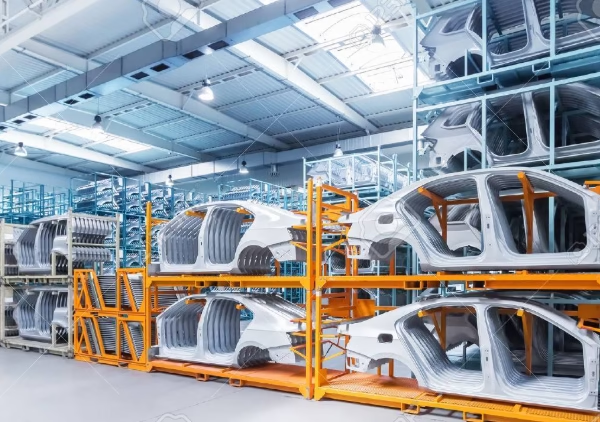Traditional fuel vehicles drive the car through the engine and gearbox, while new energy vehicles rely on three core components: batteries, electronic controls, and motors.
1. Battery
(1). The battery is a device that stores electrical energy and provides energy for the car to travel, which is equivalent to the heart and blood vessels of the human body.
(2). The capacity of the power battery directly affects the vehicle’s range, and also directly affects the charging time and charging efficiency.
(3). Different materials can be divided into: ternary lithium battery, lithium manganate battery, lithium iron phosphate battery, lithium cobalt oxide battery, and nickel-hydrogen battery.
(4). Currently, the most widely used are lithium iron phosphate and ternary lithium batteries.
Ternary lithium: high energy density, excellent low-temperature performance, long battery life, and high charging and discharging efficiency.
Lithium iron phosphate: high stability, excellent high-temperature performance, long cycle life, and low cost.
2. Motor
The motor is the power device of the car, which directly drives the car to travel, which is equivalent to the muscles of the human body.
The drive motor uses the battery as the energy source, converts the battery’s electrical energy into mechanical energy, drives the wheels through the transmission system device, and drives the vehicle.
AC asynchronous motor and permanent magnet synchronous motor are two mainstream choices.
AC asynchronous motor has a simple structure, is durable and suitable for large vehicles such as new energy buses.
Permanent magnet synchronous motor has become the first choice for small passenger cars that pursue endurance and driving experience with its high efficiency and high performance.
AC asynchronous motor: simple structure, good stability, easy maintenance, suitable for new energy buses.
Permanent magnet synchronous motor: lightweight, small size, high power quality, stronger endurance, suitable for small passenger cars.
3. Electronic control
Electronic control is the management and control system for the operation of various parts of the car, which is equivalent to the brain and central nervous system of the human body.
The motor controller provides power for the entire system. In new energy vehicles, multiple electronic control components work together to convert power into effective power to control the direction, speed, braking, etc. of the vehicle.
When purchasing a new energy vehicle, pay attention to whether the vehicle has a battery temperature control system, which is conducive to the maximum performance of the battery output and prolonging its life.
















Leave a Reply